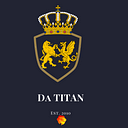The consensus protocol is what makes blockchains, DeFi projects and the likes safe. It is what safeguards the ecosystem and protects it from attacks like DOS, 51 percent, and other types of attacks.
A lot of consensus protocols exist, but there’s hardly anyone that was designed with Decentralized Finance projects in mind. This has become an issue for many DeFi projects when they use those consensus protocols.
What is Cerberus Consensus Protocol?
Cerberus is the consensus framework that Radix uses, and it was designed with DeFi in mind. It offers Radix the unlimited scalability feature that it has. This has permitted the system to easily process an untouchable amount of parallel shards.
The fundamentals surrounding the functionality of Cerberus are “pre-sharding”. In traditional situations, the sharding is normally added to the monolithic ledger, but this is not the case with Cerberus. In Cerberus, the ledger is divided into an unlimited number of shards. Cerberus uses this unlimited higher of shards to secure the system because it offers a ‘braided’ secure consensus.
To ensure the safety of the ecosystem, Cerberus ensures that the transactions go through three phases. They have to scale through the proposal phase, the validation phase, when the block propagation phase. In the last phase, the transaction is registered. Immediately a client drops commands using a node, that particular node becomes the proposer or leader. Afterward, every other node will be expected to be involved in either validating the transaction or not, and doing block propagation.
Cerberus: Its Benefits
One issue that DeFi projects’ developers have noticed is the issue of scalability when they use blockchains like Ethereum blockchain. It is not news that the speed of transactions on Ethereum has reduced and the transactional costs have increased because of the heightened number of dApps in the ecosystem.
With Radix using Cerberus, developers do not have to worry about any scalability issue.
This is because this consensus protocol is able to run numerous transactions at the same time, offering highly scalable transactions. Apart from that, DeFi apps can benefit from the security and intense speed.
The fact that Radix uses Cerberus offers developers an application layer that they can use in creating and running their decentralized finance apps. It offers them incredible features.
One issue that has been noticed by developers is the state machine replication (SMR) problem. Cerberus and Radix Engine solve this. They allow users to utilize the alternative of a smart contract that their DeFi apps that can benefit from effortlessly.
Radix, using Cerberus, makes it easy to carry out its function as a massive network of diverse transactions and dApps. It uses parallelism to offer linear scalability. The demand for the network is taken care of by node runners.
The quality of the atomic composability can never be reduced, no matter how large the network grows. This is made possible because the direct consensus that occurs within the shards is done seamlessly.
Conclusion
Currently, there are a number of consensus in existence at the moment. The issue is that many of them are not built with DeFi apps in mind. Developers have to worry about scalability, higher transaction costs and other issues when using them. This is why when Radix utilized Cerberus, developers couldn’t get enough of it. Cerberus is a specially dedicated consensus that was designed with DeFi apps in mind. It takes into consideration the fact that Defi dApps and their services grow as time goes on. It makes allowance for the growth.
Apart from that, Cerberus offers decentralization, intense security, heightened speed and low transactional costs to dApps.
More info:
You can find helpful content on their Website: (https://radixdlt.com/),
Blog: (https://www.radixdlt.com/blog/),
Podcast: (https://www.radixdlt.com/podcast/)
